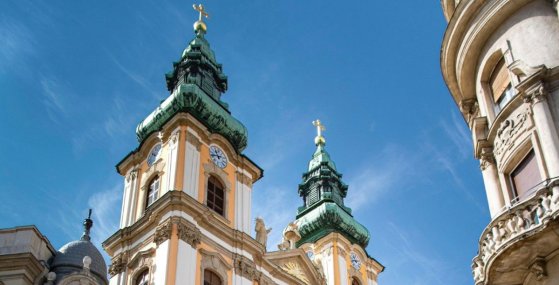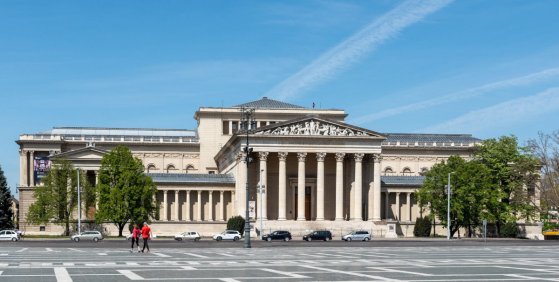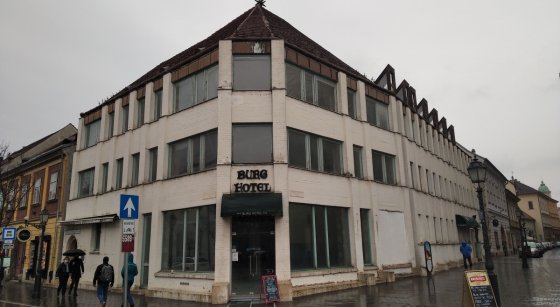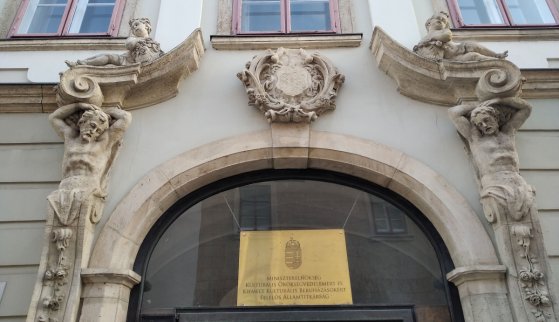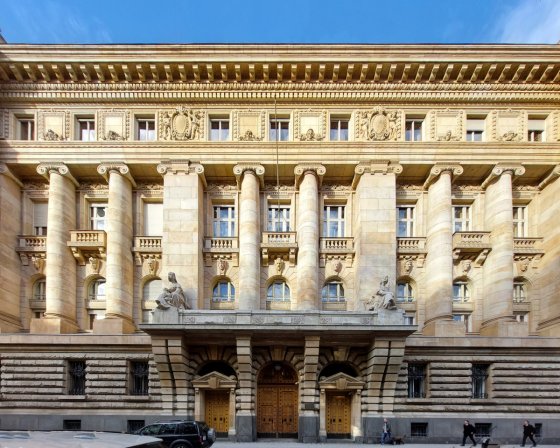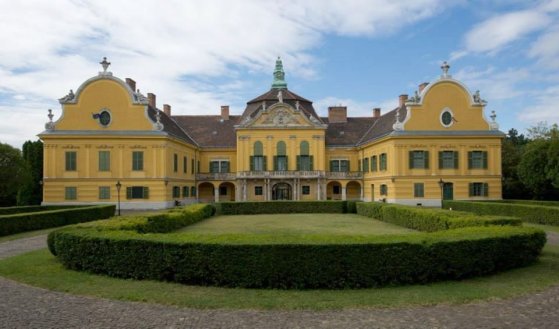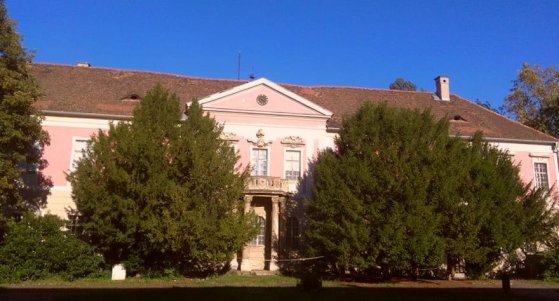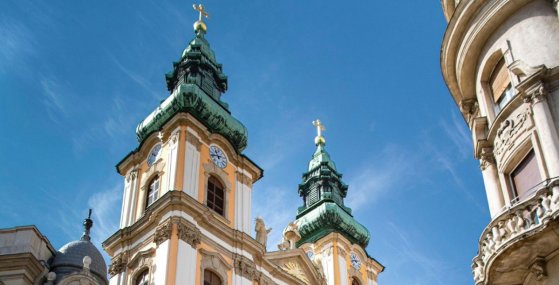 The „intertwined history” of the bridges and the city of Budapest
Which ideas and events have shaped the fate of bridges of Budapest and the cityscape? Alongside many other interesting facts, this question is also answered this newly published book by the Budapest City Archives, which introduces the history of bridges in Budapest.
The „intertwined history” of the bridges and the city of Budapest
Which ideas and events have shaped the fate of bridges of Budapest and the cityscape? Alongside many other interesting facts, this question is also answered this newly published book by the Budapest City Archives, which introduces the history of bridges in Budapest.
baroque
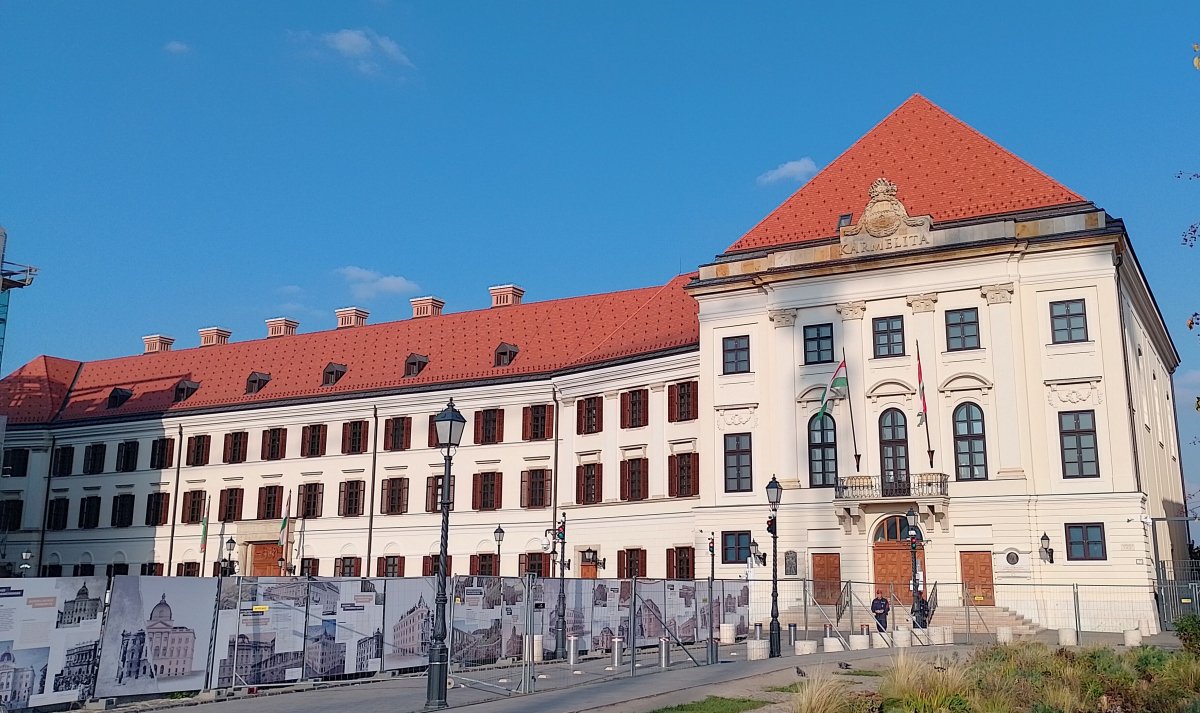 The church and monastery were turned into a place of entertainment - the Castle Theatre opened 235 years ago
The church and monastery were turned into a place of entertainment - the Castle Theatre opened 235 years ago
October 16, 2022 at 9:00 AM
One of the characteristic buildings of the Buda Castle is the Carmelite monastery, which has been used by the Prime Minister's Office for almost four years. The eponymous order of monks was actually forced to withdraw from the walls a long time ago, precisely 235 years ago, their church was turned into Castle Theatre. The ruthless intervention also greatly affected the building itself, but it was mostly then that the image that is known today was formed.
Art inside the centuries-old walls - the little-known side of the University Church
July 17, 2022 at 9:00 AM
The walls of the University Church have been standing tall in the inner city of Pest for 280 years: the construction of one of the jewels of Hungarian Baroque architecture was finished in 1742, after nearly twenty years. However, this did not mean its completion, as the interior was still completely unadorned at that time. It got its worthy face surprisingly late, only in the middle of the 19th century, which was supplemented with additional details at the beginning of the 20th century- so the church we know today was formed then.
The renewed Városliget wing of the Museum of Fine Arts opened with a permanent exhibition
December 15, 2021 at 5:00 PM
As a new stop in the comprehensive reconstruction of the museum, a new permanent exhibition unit of the Old Gallery of the Museum of Fine Arts was opened in the renovated part of the Városliget wing of the building, more than one and a half thousand square meters, arranged according to a new concept.
The other hotel in Budavár - The former Burg Hotel and what was before it
December 9, 2021 at 2:00 PM
The most significant hotel in Buda Castle is undoubtedly the Hilton. This is explained not only by the world-famous brand, but also by the size and panoramic location of the building. Barely a hundred metres away, however, the small Burg Hotel held the competition with its big rival for two decades. Like Hilton, it is a modern building as well, its predecessors destroyed in World War II. But now the area is once again undergoing a change: a partial demolition permit has been issued for the building, and work has already begun on the interiors.
Former palace of monument protection in Buda castle - The building on Táncsics Street has a new owner
November 30, 2021 at 10:00 AM
There are many monuments in Táncsics Mihály Street in Buda Castle, including the Baroque palace at No. 1, which has played a special role in the field of monument protection: until its restoration in 1970, the National Monument Inspectorate and its successor organizations have operated here until recently. The building has now been sold by the Hungarian state, so it will be given a new function in the future. However, this is no stranger to it: during its long history, it had many different owners who used the palace built in the 18th century differently.
The wedge of Szabadság Square is renewed - The Hungarian National Bank regains its original splendour
November 8, 2021 at 9:00 AM
The Hungarian National Bank was established in 1924, and the institution's well-known building in Szabadság Square was actually handed over in 1905 as the headquarters of the Austro-Hungarian Bank in Budapest. The economic flourishing of the period of dualism is also reflected in the prestigious building designed by Ignác Alpár, which will hopefully be brought to the fore by the reconstruction that will begin soon. During the renovation of the monument, the original conditions will be restored in the interior and the whole building will be modernised and made energy-efficient.
András Mayerhoffer, the creator of the Hungarian Baroque style, died 250 years ago
September 12, 2021 at 9:30 AM
András Mayerhoffer, born in Salzburg, is one of the leading figures of Baroque-Rococo architecture in Hungary. He is also known as the creator of the so-called Grassalkovich or Gödöllő style. The works of the master builder and architect, who died 250 years ago, such as the first two-towered Catholic Church in Pest or the former Péterffy Palace in Piarista Street - are still defining elements of Budapest's cityscape.
The baroque splendour of Óbuda – A palace visited by Maria Theresa
September 26, 2020 at 6:00 PM
The Zichy Palace on the main square of Óbuda (Fő tér) once housed a luxurious lifestyle. The building's baroque splendour, ornate gates, large interiors, its ballroom, billiard room and shooting range, alongside its garden with fountains and exotic plants guaranteed both entertainment and rest. Even Queen Maria Theresa visited the famous palace, where concerts and theatrical performances were commonplace, and even the count himself acted. What has remained of the legacy of the Zichy family?
Renovated University Church reopened
September 7, 2020 at 5:00 PM
The University Church of the Nativity of the Blessed Virgin Mary in the 5th District has been renovated. As part of the process the statues of the baroque building were restored, its sacristy renovated, the floor tiles replaced, the heating and electrical system modernised and the copper cladding of the spires repaired.
More articles
 The „intertwined history” of the bridges and the city of Budapest
Which ideas and events have shaped the fate of bridges of Budapest and the cityscape? Alongside many other interesting facts, this question is also answered this newly published book by the Budapest City Archives, which introduces the history of bridges in Budapest.
The „intertwined history” of the bridges and the city of Budapest
Which ideas and events have shaped the fate of bridges of Budapest and the cityscape? Alongside many other interesting facts, this question is also answered this newly published book by the Budapest City Archives, which introduces the history of bridges in Budapest.
 The Bridge Report, which brought a turning point in the history of Budapest
A travel report that changed the history of Pest and Buda, as well as Hungary. The little book contributed to the change of half a thousand years of legal customs and the implementation of an investment of unprecedented size and technical quality. This book was The Bridge Report [Hídjelentés in Hungarian].
The Bridge Report, which brought a turning point in the history of Budapest
A travel report that changed the history of Pest and Buda, as well as Hungary. The little book contributed to the change of half a thousand years of legal customs and the implementation of an investment of unprecedented size and technical quality. This book was The Bridge Report [Hídjelentés in Hungarian].
 Drama on the university wall - The heroic monument was planned 95 years ago
In the constant hustle and bustle of the Egyetem Square in Pest, the students may not even notice the monument that decorates the short section of wall between the church and the central building of ELTE. However, it commemorates their predecessors, the heroes who fought for their country in World War I, and those who heroically helped them. The first design of the dramatically collapsing soldier was born in 1928, ninety-five years ago.
Drama on the university wall - The heroic monument was planned 95 years ago
In the constant hustle and bustle of the Egyetem Square in Pest, the students may not even notice the monument that decorates the short section of wall between the church and the central building of ELTE. However, it commemorates their predecessors, the heroes who fought for their country in World War I, and those who heroically helped them. The first design of the dramatically collapsing soldier was born in 1928, ninety-five years ago.

